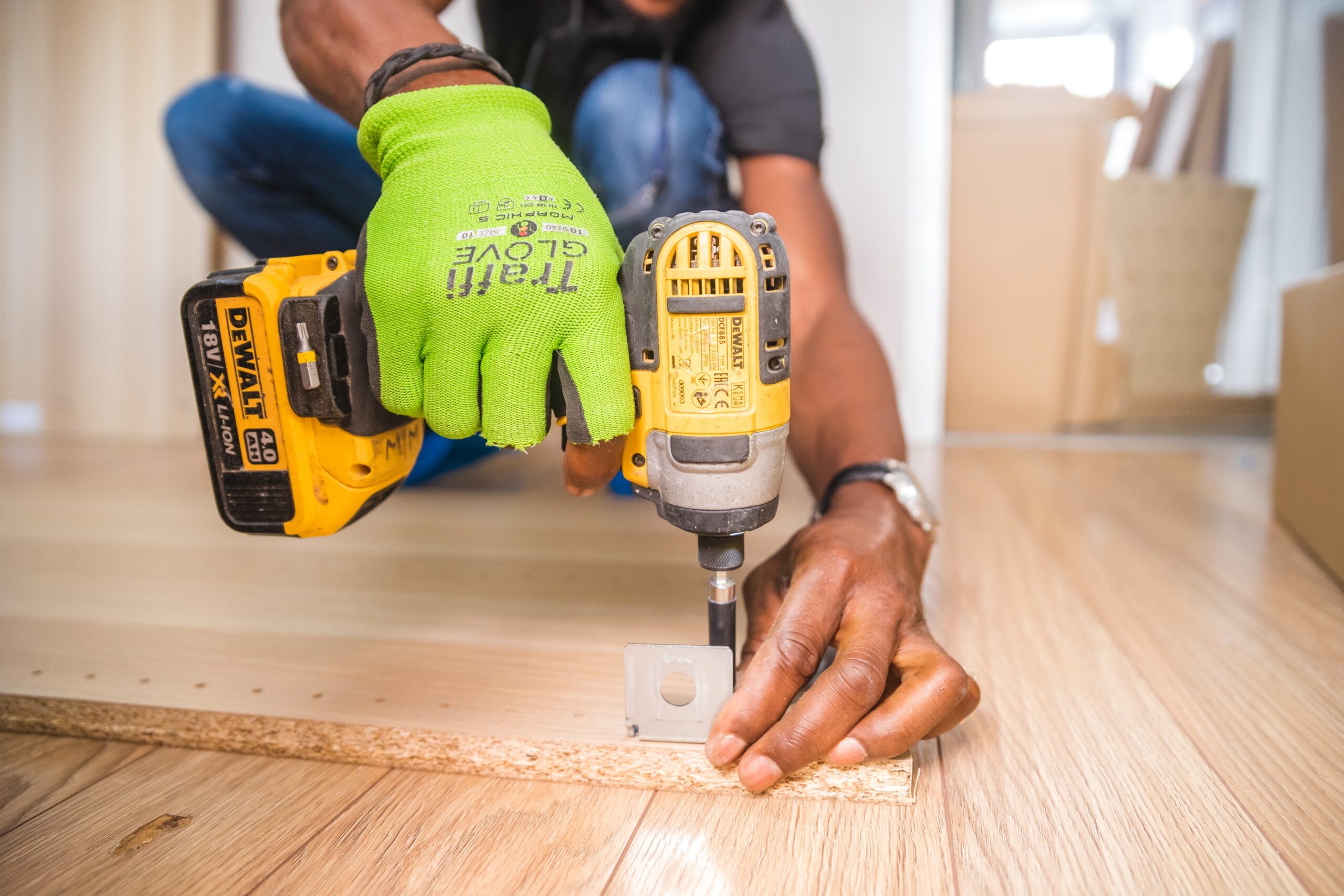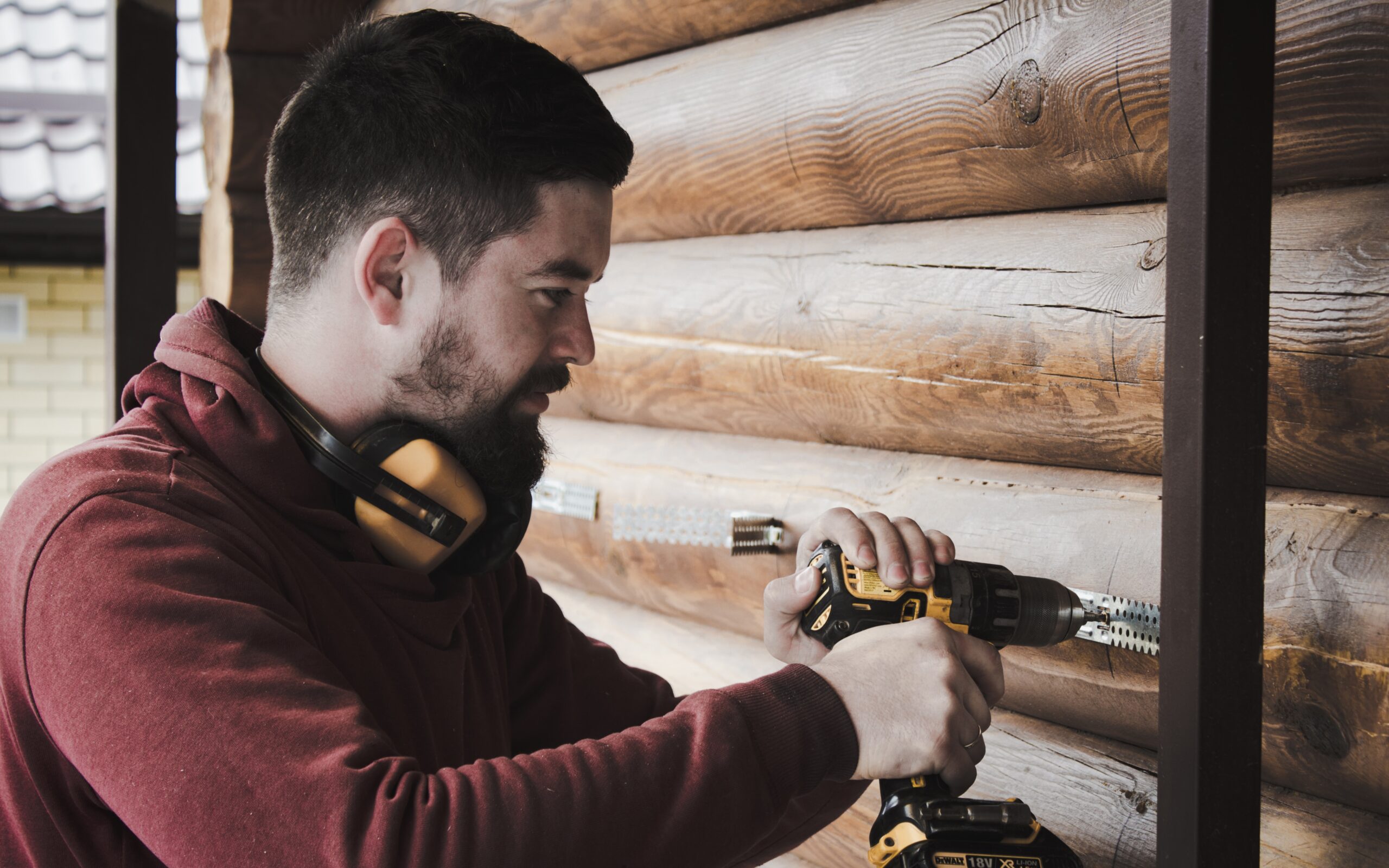Background and History of Compact Drills
Most machinery has been with us for hundreds of millions of years, even if we don’t recognize it. The drill is no exception. The bore drill was one of the first (if not the first) drills to be invented. This gadget was invented in Egypt circa 3000 B.C. The auger drill was the next drill to be designed. This drill, which was designed in the Roman era, is still in use today. Even the commonplace electric drill was invented relatively early in history.
The electric drill may appear to be a recent development, perhaps only a few decades old, but it is actually fairly old. In 1889, the first electric drill was invented. Two Australian innovators, Arthur Arnot, and William Brian, are credited with developing the design that allowed an electric motor to be combined with the classic drill design. This initial electric drill prototype was too huge to transport from one location to another. It was exclusively utilized for stationary work or on job sites with plenty of power.
The electric drill quickly gained popularity in the workplace, leaving many wondering how far the boundaries of equipment and tools could be pushed. As a result, Wilhelm Fein and Carl Fein were able to transform the electric drill into a portable gadget only 5 years later. This concept transformed the industry and enabled contractors to undertake more extensive work in their fields.
The era of electric drills began with the debut of the portable electric drill in 1894. Contractors raced to this revolutionary new drill. In addition, fresh research was conducted in the field to refine and develop the design of the electric drill. Several companies released their versions of the new tool, but it wasn’t until 1917 that the next revolutionary electric drill design emerged. Black and Decker stunned the world with their take on the electric drill this year.
They introduced the first electric drill with a trigger switch and pistol grip. This style was soon popular among builders and construction workers. Many companies began to develop attachments that could be used in addition to the drill in addition to drill designs. This enabled them to make the drills more adaptable and usable for a wide range of applications. As drill capabilities improved as a result of these new breakthroughs and discoveries, so did demand for drills.
When Was the First Compact Drill Created?
The introduction of the first cordless drill to the electric drill market changed the way work could be done forever. Contractors could now not only bring their tools to job sites with the increased power of an electric motor, but they also no longer had to limit their range of motion to a cord. The invention of the first cordless drill is the subject of much debate. Many people credit Black and Decker with inventing the cordless drill in 1961.
When Were Drill Bits Invented?
Long before the first drill, the first drill bit was invented. Drill bits have been dated back to prehistoric times, and experts believe that Homo sapiens were using them as early as 35,000 BC. These tools were used to bore into various materials. They continued to evolve and become more sophisticated over the decades.
However, it wasn’t until the 13th century that we saw drill bits made of metal rather than wood, bone, or shells. These metal drill bits are more similar to the drill bits we use today. Drill bits have evolved from the 13th century into the tools we are familiar with today.
What to Look for in a Compact Drill
1. Chuck jaws: Most drills have a maximum capacity of 3/8 inch. Some 14.4 and 18V drills can accommodate 1/2-inch bits.
2. Clutch: More settings allow you more control over the depth to which screws are driven.
3. The speed-range control is set at high for drilling and low for driving screws. Look for the greatest difference between them.
4. Forward/reverse switch: It should be simple to use your thumb and trigger finger to operate.
5. Texture and contour should enhance your grip; test the grip before purchasing.
6. Voltage: Higher voltage equals greater power, but it also means more weight
7. Two batteries are better than one. New NiMH batteries have certain benefits.
8. When gripping the drill, make sure your index finger fits comfortably around it. Variable speed provides the most control.
9. Hand-turn the chuck jaws open and close with a keyless chuck.
Compact Drill Features
Power
Power in compact drills is measured in terms of battery voltage. Higher voltage means more torque-spinning strength to overcome resistance. The top-end voltage has increased from 9.6 to 18V during the last decade, however models range from 6, 7.2, 9.6, 12, 14.4, and 18V. Today’s higher-voltage drills have enough power to bore large holes in framing lumber and flooring. That’s some serious muscle. However, the price of power is weight. A standard 9.6V drill weights 3 1/2 lbs., however an 18V one can weigh up to 10 lbs.
Handles
Prior to the introduction of compact drill/drivers, most drills featured pistol grips, with the handle positioned behind the motor like the handle of a revolver. However, the majority of today’s cordless models include a T-handle.
To minimize hand slippage and to accommodate a battery, the handle base flares. A T-handle provides superior overall balance because the battery is located beneath the weight and bulk of the engine, especially in bigger drills.
Also, because your hand is out of the way in the center of the drill, T-handle drills can often get into tighter spaces. A pistol grip, on the other hand, allows you to apply pressure higher up — nearly immediately behind the bit — letting you to put greater force on the task.
Clutch
The adjustable clutch is what distinguishes electric drills from compact drill/drivers. When a predefined level of resistance is achieved, the clutch disengages the drill’s drive shaft, generating a clicking sound.
As a result, the motor continues to turn but the screwdriver bit does not. Why does a drill require a clutch? It provides you control so you don’t shred a screw or overdo it once it’s snug. It also protects the motor when driving a screw or tightening a bolt encounters significant resistance.
The amount of distinct clutch settings varies each drill; better drills have at least 24 options. You can really fine-tune the power of a drill with that many clutch settings. The settings with the lowest numbers are for little screws, while the settings with higher numbers are for larger screws. Most clutches also include a drill mode, which allows the motor to fully power the bit.
Speed
The cheapest drills feature a single speed, while the majority have two fixed speeds: 300 rpm and 800 rpm. A sliding switch or trigger allows you to choose between high and low speed. These drills are suitable for the majority of light-duty activities. The low speed is for screw driving, and the high speed is for drilling holes.
Choose a drill with the same two-speed switch and a trigger with variable speed control that allows you to alter the speed from 0 rpm to the top of each range for more refined carpentry and repair operations. If you do more hole drilling than screwdriving, seek for a higher top speed – 1,000 rpm or higher.
Batteries and Chargers
Nickel-metal-hydride (NiMH) batteries are the most recent advancement in battery technology. They are smaller and last longer than normal Nicad batteries. NiMH batteries are also safer to dispose of than Nicads because they don’t contain cadmium, which is very poisonous.
Fast recharges are important for contractors, but longer recharges aren’t normally an issue at home, especially if you have two batteries. Furthermore, there are some disadvantages to fast charging. Unless it’s carefully constructed equipment, a quick recharge might destroy a battery by generating excessive heat.
How to Use a Compact Drill
These recommendations will help you drill or drive screws more accurately and efficiently.
- The same basic rules apply whether you’re drilling or driving. Wear safety glasses and other appropriate safety equipment, such as hearing protection and a respirator or safety mask, as directed by the drill manufacturer.
- Clamp your work item to prevent it from shifting.
- Place your work piece on a surface that you can drill into without destroying the bits, such as a scrap of plywood. The back of the work piece is less likely to split if you drill all the way through it and into the scrap wood.
- Mark a beginning point on the work piece with an awl where you intend to drive a screw or drill a hole. This allows the screw or bit to start without slipping.
- When drilling holes of a specified depth, you can quickly make a depth flag by wrapping your bit with painters tape at the required depth position on the bit. You’ve reached the desired depth when the flag reaches the work item.
- Always keep your drill perpendicular to your work surface and everything straight to keep your bits from wandering or breaking. If you’re just starting off, place a square next to the drill so you can see and feel the proper alignment. Then apply even, consistent pressure. Begin drilling slowly and gradually increase the speed. Allow the drill to do the work.
- Back the bit out slightly from the wood for every 1/4 inch of drilling depth to clean the debris. Drilling holes will be faster, and the bit will be cooler and last longer.
- Drilling a pilot hole before driving a fastener helps prevent splitting of the wood. Drill a pilot hole for screws with a bit that matches the inner diameter of the threaded portion of the screw (not the diameter of the threads). When working with nails, use a bit that is slightly smaller in diameter than the nail. Drill to the same depth as the fastener – stopping short leads to broken wood and stripped screws. Drill the appropriate-sized holes with a countersink bit. The countersink creates a depression that allows the head of a fastener to be flush with the workpiece’s surface. Most countersink bits are labeled with the screw size for which they are intended.
- When driving a screw into a hardwood, such as oak or maple, use a dab of paste finishing wax or soap to lubricate the screw and reduce friction. This facilitates screw driving.
Other features to consider
1. Belt clip: great for short-term, hands-free storage, especially while climbing up and down a ladder.
2. Brushless motors are frictionless, which saves energy and makes them quieter. They’re also more compact, offer more torque, greater speed control, and improved performance efficiency.
3. Carry case: these might be hard or soft. A hard case will keep the drill, battery, and accessories safe, but it will be heavier and bulkier.
4. The charging cradle is an external mount for charging the battery. This is especially useful if you have two batteries, as one can charge while the other is in use.
5. The charge level indicator shows how much charge is left in the battery.
6. Light: You’d be surprised how useful an onboard light can be when working in tight, cramped spaces with insufficient illumination.
7. Reversible direction: This is necessary for removing screws from wood or other materials. Without changing your grip, the rotation button or switch should be reachable with your thumb or forefinger.
Conclusion
A compact drill is one that has been engineered to fit into narrow locations where standard drills cannot due to their size. Compact drills are used by plumbers, electricians, and other contracting workers while working in tight quarters.
A compact drill’s design is sleek and small in order to fit into as many locations as feasible. Some have rotating heads that allow the user to change the angle of drilling as needed. Attached torches to illuminate the workspace and magnets heads to retain screws in place while the drill is in operation are two more features that can be handy. Often, the design can be operated with one hand, reducing the amount of space required to run the drill successfully and safely. If you want to know more about what to look for in a perfect power drill, read The Guide to Choosing the Right Power Drill.


